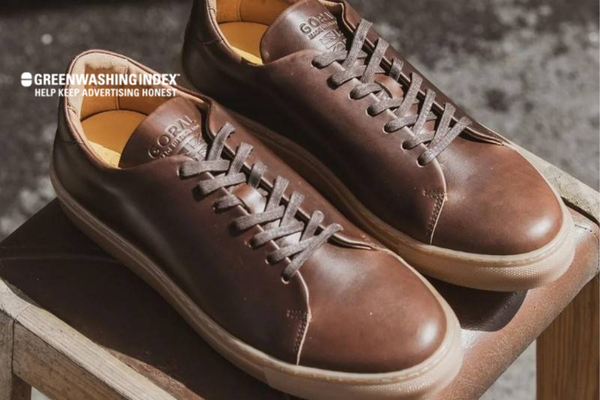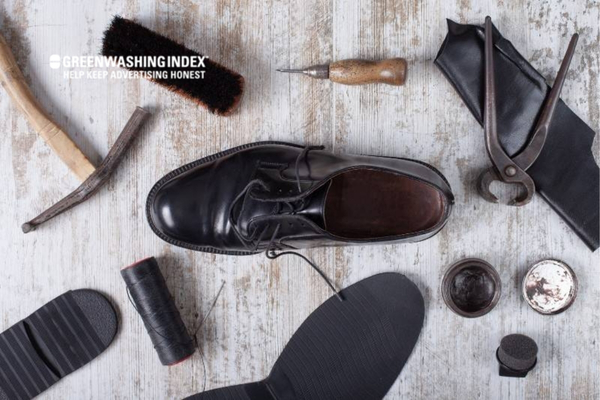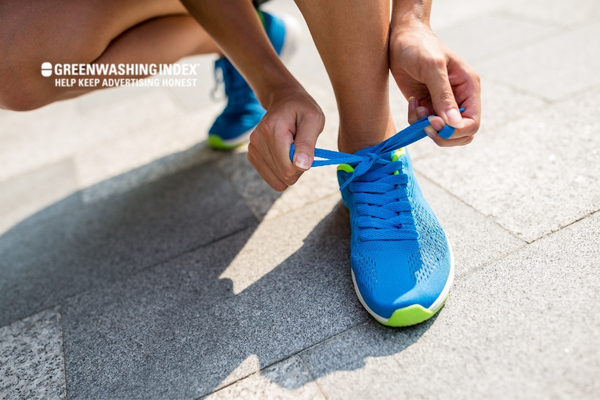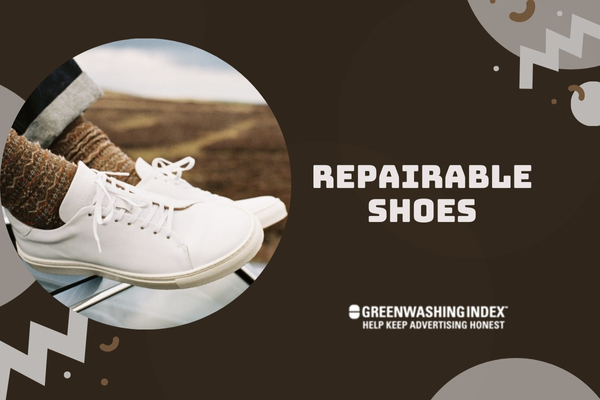Imagine slipping into a pair of shoes that could last you a lifetime. Now, I’m not talking about those one-off finds that miraculously survive every adventure; I’m talking about repairable shoes—the kind of footwear designed with future fixes in mind. These aren’t just sturdy soles and strong stitches; they’re a promise of sustainability and smart design that makes shoe repair straightforward.
Repairable shoes are changing the game by offering an eco-friendly alternative to the quick fashion cycle. Instead of buying new shoes every season, repairable shoes can be mended, refreshed, and made to look new again through simple repairs.
This means fewer shoes end up as waste, less production is needed for new pairs, and more money is saved over time. In short, opting for repairable footwear could mean stepping wisely towards a greener future while keeping your feet stylishly covered.
What Makes Repairable Shoes a Game-Changer?
When we talk about revolutionizing the way we walk through life, repairable shoes stand out. They don’t just protect our feet; they promise a future where every step leaves a lighter print on Earth. Let me dive deep into what these shoes are all about and why they’re turning heads.
Understanding Repairable Shoes
Repairable shoes are a kind of footwear designed to last longer. They are different from most shoes today because you can fix them when they break or wear out. Instead of throwing them away, you can replace parts like the sole or the laces. This is a big deal for our planet because it means fewer shoes in trash dumps.
What makes repairable shoes so special is their role in sustainable fashion. Sustainable fashion is all about making clothes and shoes that don’t harm the earth. With repairable shoes, we use less stuff from nature because we’re not always making new shoes. This helps keep rivers clean and saves trees and animals.
These kinds of shoes are made with care, often by hand, and with good materials that don’t harm nature as much as other shoe materials do. They also create less waste because when something breaks, you only need to change one part, not the whole shoe.
In short, repairable shoes invite us to think before we toss away our worn-out footwear and consider fixing them instead – helping us take steps towards a greener future!
The Environmental Footprint of Traditional Footwear vs. Repairable Shoes
The way we normally make and throw away footwear can hurt our planet a lot. Most times with traditional footwear, when they get old or broken, they end up in landfills where they take hundreds of years to break down.
On the flip side, repairable shoes offer us a brighter path forward. Since these can be fixed, they don’t pile up in landfills quickly—making a significant positive impact on the environment.
When comparing traditional footwear’s environmental footprint with repairable ones:
- Traditional footwear often uses more raw materials from nature.
- Making lots of new pairs means factories produce more pollution.
- Once traditional footwear wears out – usually pretty fast – it’s tossed into bins which lead straight to piles of waste harming land and water.
But repairing cuts down on all these problems:
- You use what you already own longer so no need for lots of materials or big factories polluting our air.
- When parts like soles wear out in repairable sneakers or boots – just swap them for fresh ones instead of binning the whole pair!
So choosing repairably designed kicks doesn’t just save your wallet over time—it’s kinder to Earth every step you take!
Also Read: How Much Do E-Bikes Cost? Breaking Down the Price Ranges
The Anatomy of Repairable Shoes
When I think about repairable shoes, the first thing that comes to my mind is how they are put together. You see, these aren’t your regular wear-and-tear kind of footwear. They’re built from the ground up with a long life in mind. Let’s dig into what makes them special.

Materials That Last
The materials used in making repairable shoes are key to their staying power. Here’s a close look at them:
- Natural Rubber Soles: Instead of synthetic materials that wear out fast, repairable shoes often have soles made from natural rubber. This kind of rubber is not only tough but also easy to fix if it gets damaged.
- Leather Uppers: Many repairable shoes use leather for the upper part because leather is durable and flexible. Over time, instead of breaking down, good-quality leather tends to mold to your feet and can be conditioned and restored.
- Metal Fasteners: Some parts of a shoe need to be held together tightly. Repairable shoes might use small metal bits like rivets instead of glue or cheap plastic that could break easily.
- Replaceable Components: Things like laces or insoles often wear out quicker than the rest. In repairable shoes, these parts are made so you can replace them without much fuss when they get old.
The idea is simple: use tough stuff that lasts and can be mended easily if needed.
Modular Designs That Matter
Now let’s talk design—modular design to be exact:
- Interchangeable Parts: Imagine a shoe as a little puzzle where each piece fits neatly with another. If one piece breaks or wears out, you pop it out and put in a new one—simple as that!
- Sole Reattachment: Soles see the most action and tend to give up first. In modular designs, soles can be stitched on rather than glued so they can come off easily for repairs.
- Stitched Not Glued Uppers: Glue falls apart over time; stitches don’t give up that easily! Having an upper attached by strong threads means someone handy with a needle could extend its life by years.
Modular designs mean never saying goodbye too soon – swap parts out, stitch things up, and keep those comfy favorites marching on!
Repairability hinges on using materials built for endurance and putting those pieces together in ways we can take apart and rebuild – making sure our footsteps tread lightly on our planet while keeping our toes cozy as ever!
Also Read: DIY Face Masks: Your Guide to Eco-Friendly Creations
Why Opt For Repairable Shoes?
When I think about buying new shoes, I often wonder how my choices affect the world around me. And that’s why I’ve started considering repairable shoes a game-changer for my closet and for our planet.

Eco-Friendly Choices Reduce Carbon Footprints
For folks who might be new to this idea, let me explain what we mean by ‘carbon footprint.’ Simply put, it’s like an invisible cloud of gas that comes from everything we do—driving cars, turning on lights in our homes, and yes, even making shoes. Every pair of shoes has its own carbon footprint based on how they’re made and what happens to them when they’re worn out.
Now here’s where repairable shoes make a real difference:
- They Last Longer: Instead of tossing out your favorite pair of kicks because the sole is worn down or the heel is scratched up, you can get them fixed. This means one less pair ends in the dump way too soon.
- Less Waste: Think about all those thrown-away bits from old shoes—leather scraps, rubber soles. By fixing your footwear instead of tossing them out, you cut down on all that mess.
- Fewer Resources Used: It takes a lot of stuff to make brand-new shoes—water to dye fabrics or leather; oil for plastic parts; energy to run machines. When you repair rather than replace your shoes, you’re saying ‘no thanks’ to using more resources.
- Responsible Disposal: One day when your repaired shoes finally do give out after years (and years), they leave behind a smaller footprint—potentially fewer chemicals and non-biodegradable materials.
Financial Savvy: Invest In Longevity
Surely we all love saving money where we can—and here’s why fixing up your footwear might just be your wallet’s best friend over time:
- Buy Less Often: Imagine buying one really good pair instead of three that fall apart—you pay upfront but don’t shop as much later on.
- Repair Costs vs New Shoes: Sometimes folks think getting shoes fixed is costly compared to cheap new pairs. But add it up over months and years—it’s usually cheaper fixing what you’ve got.
- Time Equals Money: We spend time shopping for replacements when old ones wear out; sticking with repairable options frees up those hours for better things (like enjoying long walks in comfy sneakers!).
So there it is—that’s why I’m sold on repairable shoes being part not just of my wardrobe but also part of being kinder to dear Mother Earth and showing some love for my savings account too!
Also Read: Why are SB20 Units Free: Discover the Truth Now!
The Do’s and Don’ts of Fixing Your Own Kicks
When I think about repairable shoes, I remember that fixing my kicks can be a trip into sustainable living. But, before I dive in with tools and glue, there are some do’s and don’ts to keep in mind.

Do: Learn the basics of shoe anatomy—the parts like the sole, insole, upper, and heel. It helps me figure out what needs fixing.
Don’t: Go wild with the glue without cleaning surfaces first. Dirt jumps in the way and can ruin a good bond between materials.
Do: Use the right repair materials for my shoe type. Leather demands different care than canvas or synthetics.
Don’t: Ignore manufacturer repair guides or advice for my specific shoes—they know their stuff!
Do: Practice on an old pair before going hands-on with my favorite ones.
And now, let’s dig into that toolkit for beginners!
Basic Tools Every Shoe Owner Should Have
A beginner’s toolkit for shoe repairs doesn’t have to be fancy or packed full of gadgets. Here’s a list that’ll set me up right:
- Adhesive: A strong glue tailored to footwear material ensures long-lasting fixes.
- Scissors: For cutting patches or trims cleanly. A sharp pair will make jobs easier.
- Cleaning Supplies: Before any repairs start, it’s smart to have soap and water or a specialized cleaner based on whether it’s leather, suede, etc.
- Conditioner/Polish: This keeps leather soft and looking its best after repairs.
- Sewing Kit: Heavy-duty needles and thread made for stitching shoe materials come in handy when things split at the seams.
- Shoe Goo/Cement: These are heavy-duty bonding agents great for soles coming apart from uppers.
- Patches/Fillers: For holes or deep scratches on suede or leather—these blend them away like they were never there.
- Sandpaper/Emery Board: To smooth down rough patches before applying glue or filler—this makes sure nothing feels out of place underfoot.
- Tweezers/Pliers: Small tools grab onto bits of thread or help align parts when sewing up tears—it saves fumbling fingers from trouble.
- Curved Awl/Crochet Hook: Helps create clean holes if I need to thread new laces through tough spots—it keeps everything neat while avoiding further damage.
Each item has its place in mending shoes back to reliability—and getting familiar means less waste since I won’t be chucking shoes at the first sign of wear and tear! Plus, caring for what’s on my feet is a step towards sustainable footwear which feels pretty good too!
Also Read: DIY Washing Machine Cleaner – Easy Homemade Solutions
Step-by-Step DIY Guide on Common Repairs
Fixing stuff around the house can save money and feels good too. The same goes for repairable shoes: fixing them up can be quite simple. Here’s a guide explaining how to make common repairs on your own.
1. Reattaching Soles That Have Come Loose:
When the soles of your shoes start peeling off, you don’t have to throw them away. You can fix them to be as good as new! Here’s what to do:
What You Need:
- A strong adhesive made for shoes (Like Shoe Goo or E6000)
- A clamp or heavy object
- A toothpick or a small spatula
- Sandpaper (optional)
Steps:
- First things first, clean the surfaces you’re going to stick together. They need to be free from dirt and old glue.
- If the surfaces are really smooth, you might want to roughen them up with sandpaper—this helps the glue hold better.
- Time for glue! Use the toothpick or spatula to spread it evenly on both surfaces.
- Press together firmly so they stick well, being careful not to squish out too much glue.
- Now use a clamp or something heavy to keep it all pressed down while it dries.
- Wait for the time recommended by your adhesive’s instructions—usually 24 hours—to walk around in them.
Don’t rush it; let that bond get super strong!
2. Buffing Away Scuffs on Leather and Suede:
Leather and suede can look bad fast when scuffed up, but believe me; those marks can be dealt with easily.
- For Leather Shoes:
What You Need:
- Soft cloth
- Leather conditioner or shoe polish that matches your shoe
Steps:
- Wipe down your shoe with a damp cloth; we want a clean surface.
- Untouched areas need protection—a masking tape could help before polishing.
- Apply leather conditioner (or polish) lightly in circular motions over the scuff until it fades away.
Now stand back and admire that smooth, shiny leather!
2. For Suede Shoes:
What You Need:
- A suede brush (or an old toothbrush works sometimes)
- A brown gum eraser
Steps:
- Start by softly brushing away any dirt from the scuff—always go in one direction so as not to damage the material further.
- With gentle back-and-forth motions, rub over any marks with your eraser—it’s like magic seeing those scuffs disappear!
- Lastly, brush again lightly to get that natural fuzzy look back.
Take care handling suede—it’s delicate but treats you well when treated right.
3. Lacing Up Solutions for Snapped or Frayed Laces:
Broken laces don’t always mean new laces! Sometimes they just need some TLC—or creative thinking—to keep going strong.
What You’ll Need:
- For Fixing Frayed Laces:
- Clear nail polish or super glue\
- Scotch tape
- For Replacing Laces Creatively:
- Ribbons
- Fabric strips
- Leather cords
Steps For Fixing Frayed Laces:
- If they’re fraying at the ends but not snapped yet – add clear nail polish or a dab of super glue at each end spotting where threads are coming loose – this keeps everything together whilst maintaining flexibility;
- Tape wrapped tightly around breakpoints provides another quick fix;
Remember not every lace needs replacing–sometimes they just need some mending!
Steps For Creative Replacement:
If lacing needs refreshing altogether–get creative! Here are some options:
- Ribbons offer an eye-catching twist–lace-like usual but pick vibrant colors;
- Fabric strips torn from an unwanted tee shirt give cool edgy vibes;
- Leather cords last ages and level up the style significantly;
Challenge norms–switch standard with the statement using everyday materials!
Repairs done right to save money and help our planet by cutting down waste—imagine if everyone fixed their repairable shoes instead
4. Strengthening Stitches Without Losing Style
When I repair shoes, it’s important for me to make sure they don’t just last longer but also look good. Simple stitching techniques can help a lot here. Let me explain how:
- Backstitching
This stitching method is very strong and is used at the start and end of a stitch line to lock the stitches in place. It prevents seams from unraveling. - Double Stitching
Running a second set of stitches next to the first can add extra strength where it’s needed, like on the outer edges. - Slanted Stitching
Rather than stitching straight across, slanted stitches often called “diagonal” or “cross-stitch,” can distribute stress more evenly and look stylish. - Hidden Stitches
For areas where you don’t want stitches to show, like around decorative details, hidden or ‘blind’ stitches work well. - Using Stronger Thread
Nylon or polyester thread can be much stronger than cotton and won’t break as easily.
These techniques make sure that repairable shoes stay together without changing how they look on the outside.
5. Restoring Water Resistance with the Right Products
Repairable shoes may need their water resistance restored over time especially if they have been repaired before Here’s how you can do it:
- Choose Your Waterproofer:
There are many types of waterproofers: sprays, waxes, or pastes work best for most people because they’re easy to apply and go deep into the material. - Application:
- Clean your shoes gently before applying any product.
- Apply the waterproofer evenly over all surfaces.
- For sprays: Hold the can about six inches away from the shoe surface.
- For waxes/pastes: Use a clean cloth or brush to rub in circular motions until covered.
- Drying Time:
Give your shoes plenty of time to dry out completely after you apply any waterproofer—usually overnight in a well-ventilated area but not direct heat!
Fixing up your own repairable shoes with these simple waterproofing steps will keep your feet dry and protect your shoes for longer!
Brands Leading the Charge in Repairable Shoes
When we talk about looking after our planet, we know that every little bit helps. And it’s not just about recycling bottles and cans. It’s also about what we wear on our feet. I’m excited to tell you about some companies that get it right – they make shoes that can be fixed instead of tossed out. These brands are leading the charge in repairable shoes, creating sustainable footwear for a greener future.
Spotlight on Innovators: Who’s Making a Difference?
First off, let’s chat about who these trailblazers are. There’s Patagonia, a brand famous for its commitment to sustainability. They have come out strong with their line of shoes designed to last longer and be easy to mend when needed.
Another big name is Timberland, which has always aimed to shake things up with its eco-friendly practices. Their shoes aren’t just tough; they’re made with an eye toward being fixed up and worn again and again.
Lastly, there’s the newcomer Allbirds, which might be younger than others but is no less innovative with its eco-friendly wool shoes that promise comfort and easier repairs.
These companies don’t just talk a good game; they put their money where their mouth is by making products that stand the test of time and tread lightly on Mother Earth.
Breakdown of Their Repair-Friendly Models
Now let’s look closer at what these brands offer:
- Patagonia: They have this shoe called Worn Wear – here’s a cool thing – it lets you trade in your old gear so it can live on as something else or be fixed up for someone else to enjoy! So buy Patagonia if you want your shoes to have nine lives.
- Timberland: Timberland doesn’t play around when it comes to durability. Take their Earthkeepers line; these boots are made from recycled materials and are built like tanks – yet comfy like slippers! And if something does go wrong? No sweat – Timberland has got repair services lined up so you can step back into them quickly.
- Allbirds: With Allbirds, sustainability feels like walking on a cloud thanks to soft wool fabric from New Zealand sheep. The company keeps things simple – fewer parts mean fewer problems down the road – and if there is an issue? You guessed it; Allbirds makes fixing them as easy as pie (or should I say…as easy as slipping into those cozy sneakers!).
In short, repairable shoes mean less waste and happier wallets because fixing beats replacing any day of the week! These innovative brands understand that making sustainable footwear isn’t just nice to have anymore; it’s a must-have for keeping our planet green while keeping our steps light.
Conclusion
Repairable shoes stand tall as the future of sustainable footwear. Embracing these sturdy and fixable shoes means I’m taking a step not just toward fashion, but also toward responsibility for our planet. It isn’t only about looking good in my kicks; it’s also about feeling great knowing that I’m reducing waste and maintaining my carbon footprint at a minimum.
I’ve realized that investing in repairable shoes not only saves me money over time but also connects me to the ethical side of fashion. It gives me peace of mind to know that when my shoes show signs of wear, I have the knowledge and tools to fix them up—like a trusty partner in crime fighting against a quick throwaway culture.



